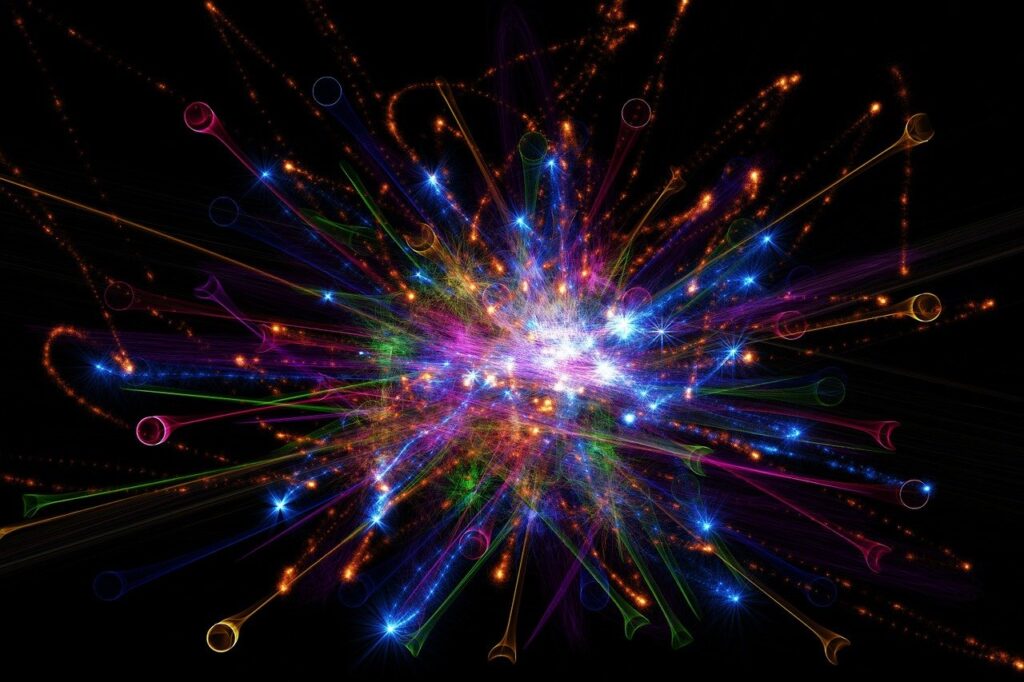The explosion may hold clues to solving some of the long-burning mysteries of the universe. (Image)
Paris:
A joint French-Chinese telescope satellite is due to launch this weekend on a mission to track gamma ray bursts, the most powerful explosions in the universe.
The light from these powerful explosions has traveled billions of light years to reach Earth, leading scientists to believe it may hold answers to some of the mysteries of the universe’s youth.
However, these flashes proved difficult to observe because they were so brief.
For further investigation, the Space Variable Object Monitor (SVOM) is scheduled to launch on board China’s Long March 2C rocket from the Xichang launch site in China’s Sichuan province on Saturday.
The spacecraft, carrying two Chinese-made instruments and two French, will then orbit 625 kilometers (390 miles) above Earth.
Chen Lan, an analyst specializing in China’s space program, highlighted the “political importance” of the joint mission.
At a “dark period” in relations between China and the West, the mission “shows that scientific cooperation can continue despite difficulties,” he told AFP.
Accidental discovery
SVOM’s mission is to use X-ray vision to track the source of gamma-ray bursts, which are detected in the sky about once a day.
Bertrand Cordier, lead scientist for the French contribution to SVOM, said the space mission began “at the height of the Cold War.”
In 1967, a US satellite monitoring countries’ compliance with the Nuclear Test Ban Treaty accidentally captured a brief flash of gamma rays that could also be produced by a nuclear explosion.
“They thought it was a nuclear explosion on Earth until they realized it was coming from space,” Cordier told a news conference.
“Since then, we’ve been trying to understand the origins of these objects.”
Several missions, including NASA’s Swift Telescope, are already unraveling these luminous mysteries.
Considered the most powerful events in the known universe, these bursts are the highest-energy flashes of light, emit gamma rays, and last from a fraction of a second to tens of seconds.
Susanna Vergani of the Paris Observatory said the explosion would be followed by an “afterglow” that would last for several hours and “reach us across the entire universe.”
Clues to the early universe
Shorter bursts are thought to result from massive neutron stars colliding with each other or from a neutron star being swallowed by a black hole.
Longer bursts are thought to come from the supernova explosions of the universe’s oldest stars – massive stars much bigger than the Sun.
The most distant, and therefore oldest, gamma-ray burst ever confirmed occurred just 630 million years after the Big Bang, when the universe was 5 percent of its current age.
Gamma-ray bursts allow scientists to “probe into the distant universe,” including the mysterious chemical processes that gave birth to the first stars and galaxies, Vergani said.
But the explosion may also hold clues to other long-burning cosmic mysteries.
“The light from these explosions traverses billions of light years and so carries the signatures of every gas cloud it passes through,” Vergani said.
Scientists therefore hope that gamma-ray bursts will reveal chemical elements throughout the history of the universe.
Do gamma-ray bursts pose a threat to Earth? The Milky Way is too old to have experienced the kind of giant collision that would cause a burst, making the chances of one “extremely low,” Cordier said.
Earth’s atmosphere should be able to protect us from explosions from further away, he added.
Because gamma-ray bursts are so brief, scientists will be racing against time to collect data before they fade away.
As soon as SVOM detects a gamma-ray burst, it alerts a team of scientists on standby around the clock.
Within five minutes, a network of ground-based telescopes will be peering in the direction of the explosion and gathering more information.
(Except for the headline, this story has not been edited by NDTV staff and is published from a syndicated feed.)

